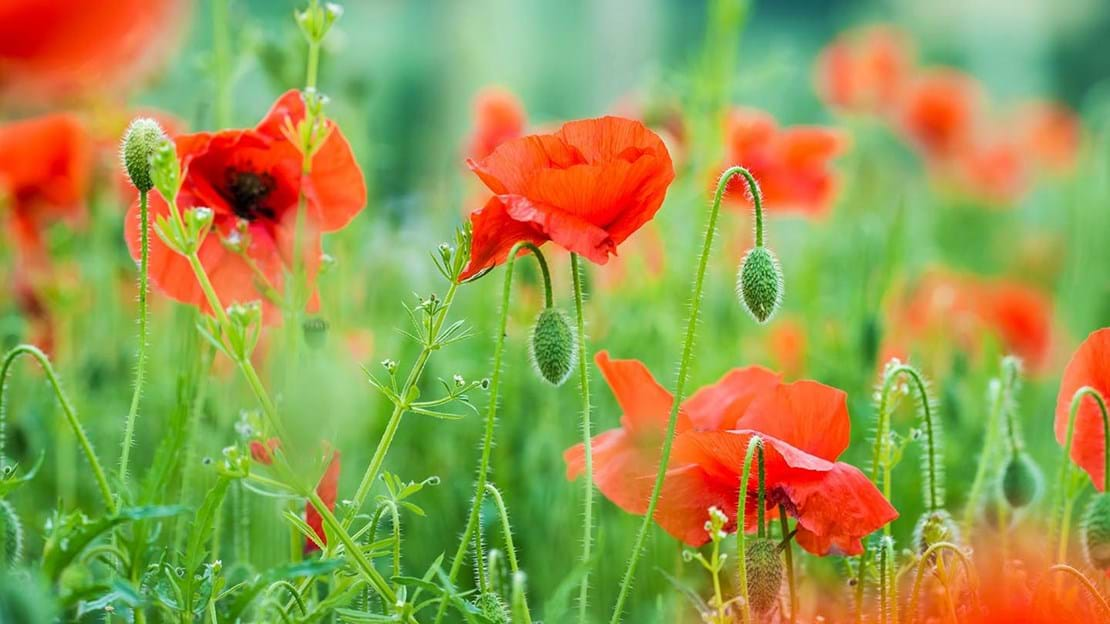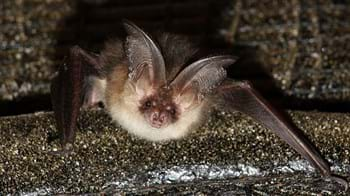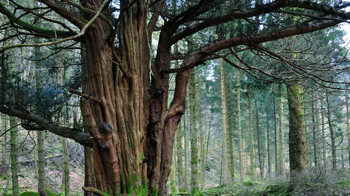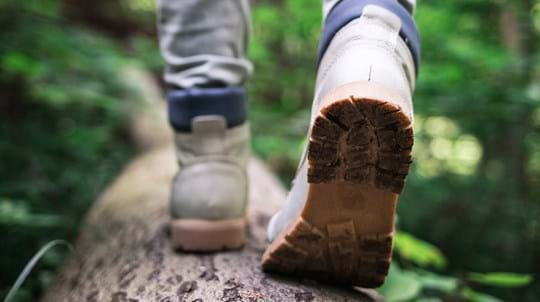
Langley Vale Wood
Langley Vale

Woodland Trust wood
259.69 ha (641.69 acres)
TQ209567
Explorer NULL
OS Landranger NULL
The largest of our four First World War Centenary Woods, Langley Vale Wood has pockets of ancient woodland, diverse and fascinating wildlife and flora, and stunning views over the rolling hills of the North Downs. In the coming years, our ambitious woodland creation scheme will transform the existing arable land into both a natural haven and a living memorial to those who sacrificed so much in the First World War.
Features
- Public access
- Autumn colour
- Spring flowers
- Grassland
- Broadleaved woodland
How to get to Langley Vale Wood
At 259 hectares (641 acres), Langley Vale Wood is the largest of our four centenary woods, one in each country of the UK.
It lies just south of the village of Langley Vale in Surrey and 3.2km (2 miles) south of Epsom. The M25 motorway runs along the southern boundary.
From M25 junction 8 (north or southbound) take the A217 exit to Reigate. Continue on the A217 Brighton Road and follow the signs for Epsom Race Course.
Follow the B290 in Epsom and turn left onto Langley Vale Road. Continue onto Downs Road and turn left onto Headley Road.
The Langley Vale Wood car park entrance will be on your left.
Postcode: KT18 6BZ
What3Words: ///jaws.will.trees
The nearest stations are in Ashtead, 3.2km (2 miles) away, Tattenham Corner, 3.7km (2.3 miles) away, and Epsom, 4.2km (2.5 miles) away.
Visit National Rail for more information.
Services run from Epsom station. The nearest bus stops to Langley Vale Wood are Downs Road on Headley Road, and Grosvenor Road in Langley Vale village.
Visit Traveline for more information.
To access Langley Vale Wood from Epsom Downs, please follow the route/s on the map provided. Although there are a number of public footpaths and public bridleways crossing the Downs, we ask our visitors to follow our recommended route and be mindful that these areas of Epsom Downs are frequently used to exercise racehorses.
Racing is synonymous with Epsom and the welfare of racehorses and riders, and our visitors, is paramount; please help by reading and following the Epsom Downs Code of Conduct for visitors.
Facilities and access
Access is via the car park and by public rights of way from Epsom Downs, Tadworth or Walton on the Hill. If walking on Epsom Downs, be aware that racehorse training is carried out there every morning until midday.
Langley Vale Wood has two bridle paths running through the site and one small stretch of public footpath. Cyclists and horse riders must stick to the bridle paths. The site is bordered by public bridle paths to the north, east and west with a wide network of paths to the north on Epsom Downs.
Site entrances to the north of Langley Vale Wood are accessed via public bridleways BW127, BW33 and BW138 from the Epsom and Walton Downs.
Site entrances to the south are accessed via Hurst Road and BW127, and entry points to the west are via BW33 and Ebbisham Lane, Walton on The Hill. Paths within the site are mainly farm tracks.
The majority of the site operates a dogs on leads policy. Please visit responsibly by keeping your dog on a lead where required and disposing of dog mess in the bin provided.
The site has parking for 70 vehicles and includes electric vehicle charging points. Parking is charged at £2 for 2 hours, £4 for 4 hours and £5 for a full day with all proceeds going towards ongoing management of the site. Current rates for electric charging are displayed on site. Electric parking meters are provided by Vendelectric.
The car park is locked each evening at dusk – please check closing times and ensure you return to your vehicle in time to avoid being locked in.
The car park will be closed during the Epsom Derby’s Ladies Day and Race Day each year, usually the first Friday and Saturday in June.
The nearest public toilets are in Ashtead on Woodfield Lane (KT21 1AT).
Wildlife and habitats
Wildlife
The mixed habitats at Langley Vale Wood are a haven for local wildlife. Look out for signs of badgers, and keep your eyes peeled at dusk when you might spot one of the five species of bat recorded at the site.
Enjoy the chorus of birdsong – 59 species have been recorded at the wood including many on the Red List of species at risk, such as the cuckoo and ground-nesting birds such as lapwing and skylark.
To protect wildlife and habitat, the majority of Langley Vale Wood is a dogs-on-leads zone – please stick to the paths and keep dogs on leads in these areas. In particular, please keep dogs on short leads between March and July to protect vulnerable ground-nesting birds.
Trees, plants and fungi
The site’s existing woods are largely ancient semi-natural woodland. The three biggest - Great Hurst Wood, Little Hurst Wood and Downs View Wood - are designated Sites of Nature Conservation Importance. Please stick to paths and keep dogs on leads in these areas. In total, 380 species have been recorded in Langley Vale Wood, including 37 ancient woodland indicators.
Great Hurst Wood, Little Hurst Woods and Downs View Wood are ancient woodland with ash, oak, beech and sweet chestnut trees, and Great Hurst Wood has an excellent bluebell display in spring.
Round Wood is mainly hazel coppice and elder with a rich ground flora, including early purple orchids which grow by the paths. Gillettes Wood is mainly ash, cherry and oak.
Langley Vale Wood is home to a wide range of rare arable plant species which are of national and international importance. Some of the species found include red hemp-nettle, night-flowering catchfly and ground pine.
Habitats
The mix of ancient woodland, grassland and woodland creation at Langley Vale Wood supports a vast range of locally and nationally rare flora and fauna. The woodland is part of the North Downs National Character Area (NCA), a chain of chalk hills across the south-east. Chalk grassland is a notable feature of this landscape and is of ecological importance due to its ability to support rare species.
About Langley Vale Wood
History
There has been a farm at Langley Vale since the early thirteenth century. It’s likely that the small farming settlement was destroyed by the Black Death in the fourteenth century as it disappeared from records around this time. Later maps show that part of the site was used as arable land from the mid-18th century.
During the First World War, the Walton and Tadworth end of the site was used for army training and there were trenches, a rifle range, a gas training school and a camp.

Credit: Ben Lee / WTML
First World War Centenary Wood
The Woodland Trust purchased the site in 2014 as the First World War Centenary wood for England. We have since planted around 180,000 trees, many of these with help from the local community.
Artwork across the site tells local stories of the war effort and commemorates those who sacrificed so much during the First World War.
The Regiment of Trees by Patrick Walls
Commemorating Lord Kitchener’s inspection of troops on Epsom Downs in January 1915, 12 figures stand among a mix of native broadleaf trees, evoking stories of the harsh blizzard conditions in which the 20,000 volunteer soldiers waited for Kitchener’s arrival, some not even fully kitted out. Together, the sculptures and trees create a living tribute to the civilian men who answered the call to join Kitchener’s New Army.
Witness by John Merrill
Inspired by the paintings of official war artist Paul Nash and carved with words by seven poets from the period, this memorial feature creates a space for contemplation. Witness is constructed from around 35 pieces of oak and stands over six metres tall.
Excerpts from the following poems are carved inside the sculpture:
- Matthew Copse by John William Streets (1883-1916)
- Lights Out by Edward Thomas (1878–1917)
- Afterwards by Margaret Postgate Cole (1893–1980)
- May, 1915 by Charlotte Mew (1869-1928)
- The Gift of India by Sarojini Naidu (1879-1949)
- Futility by Wilfred Owen (1893–1918)
- Grodec by Georg Trakl (1887-1914).
Jutland Wood
Commemorating the Battle of Jutland (31 May – 1 June 1916), this wood pays tribute to one of the most important naval battles of the First World War.
A striking steel figure by sculptor Christine Charlesworth depicts, on one side, a sailor in 1916 naval uniform. This side looks to the past – the ancient woodland standing when those sailors were alive. On the other side, a sailor in 2016 uniform contemplates the future – the newly planted trees.
Craftsman Andrew Lapthorn created 14 oak porthole markers, honouring each of the British warships sunk in battle and those aboard. Inviting rest and contemplation, two bespoke benches, also made by Andrew, are located within the ship-shaped clearing.

Your support matters
We were able to plant trees here thanks to your response to an important appeal. Discover how you helped us create another incredible place for people and wildlife, and what the future holds for this new wood.
See what we've achievedThings to do at Langley Vale Wood
Sculptures and the First World War
Take in the history of the site and enjoy the beauty of the sculptures which commemorate those who sacrificed so much in the First World War.
Explore Cherry Avenue and learn about how local people got involved in the war effort.
In November you can join our annual Month of Remembrance - share your own reflections at the willow wreath sculpture in tranquil surroundings.
Picnic
Visit our interactive picnic tables in the Sainsbury’s Community Orchard. There are no bins on site so please take rubbish home with you.
Walks
With lots of routes for varying abilities, venturing out on foot is a great way to explore. Follow the two way-marked trails on site - download the map below.
Don’t forget to keep dogs on leads on your visit.
Poppy play area
In our poppy play area, children can run wild and connect with nature. Built with sustainable materials, this vibrant space was designed with the landscape in mind. Clamber up the tower, wiggle through the tunnel and study treasures found in the wood with a magnifying post at the nature table. Poppy play area is located opposite the community orchard, a short walk from the car park, as seen on the Langley Vale Wood walking map which can be downloaded below.

A lasting legacy
This wood is just one of many to have been protected by gifts in wills, securing it for generations to come. Your legacy gift could also make a real difference to woods, trees and wildlife.
Learn what your gift could mean









































